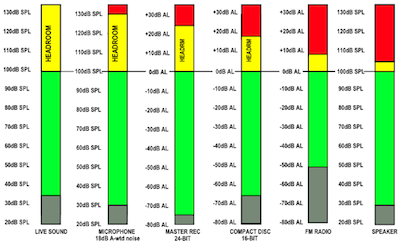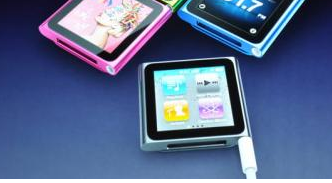I have seen thousands of people in offices walking around carrying a piece of paper that they take to someone else and waste time having a chat...
In the world of WiFi networks, cloud storage and iPads there is a better solution. I propose this "app" and solution:
- Documents are created on the iPad or scanned, word processed and loaded by WiFi, probably the best is to have them all in PDF format with embedded metadata (Author, Subject, Key Words etc) and an urgent/normal, read/unread tag.
- A database of users is kept on a server, and this is synched to all iPads in the network automatically
- Any user can take a document they have created, chose another user and "PoP" it across to them. Or they can chose a group of users and "PoP" it to all of them
- Any user will see their received documents, tagged as urgent/normal and read/unread
- Document filing will happen in the cloud. This is the tricky bit as few people have solved the problem of decently classifying documents and providing access by other than searching. So search will be important. Only one copy of any document need be kept with metadata about who "PoP"ed it and who received it (and maybe who read it!)
Add-on. Classification
Any classification system needs a central control or defined "menu" so avoid random tagging. Such a menu structure could be defined by a system administrator and imposed on the cloud document database.
Wednesday 15 September 2010
Apple TV needs digital amplifier
Have a look at the new Apple TV, a wonderful small device that has LAN input (Ethernet or WiFi) and HDMI and Optical Digital Audio output, and you will see a connectivity need.
Sure you have the simplicity to connect your flat screen TV with its HDMI input direct to the Apple TV and get HD video and audio. But if you want to be a HiFi buff and connect your giant loudspeakers to the Apple TV you need an amplifier with Optical input. These do exists but are expensive.
So what I propose as a new product is a medium cost, high spec audio amplifier to fill this niche:
- Tower design matching the same width and depth as the Apple TV
- Optical TOSLINK input at up to 24bit/96kHz (its not clear if the Apple TV will stream 24bit/96kHz but it may in the future, for now iTunes probably down-samples everything to 16/44.1
- Balanced audio analog input
- Superior DAC based on the world leading Wolfson chips
- Two class D audio amplifiers, possibly the Hypex modules, giving > 100W per channel.
As an alternative solution a completely digital amplifier could be built using a digital audio receiver (e.g. STA120, WM8804...) plus an integrated digital amplifier like the STA328, giving 40-60W per channel.
Contact me if you have any interest to commercialise these ideas.
Sure you have the simplicity to connect your flat screen TV with its HDMI input direct to the Apple TV and get HD video and audio. But if you want to be a HiFi buff and connect your giant loudspeakers to the Apple TV you need an amplifier with Optical input. These do exists but are expensive.
So what I propose as a new product is a medium cost, high spec audio amplifier to fill this niche:
- Tower design matching the same width and depth as the Apple TV
- Optical TOSLINK input at up to 24bit/96kHz (its not clear if the Apple TV will stream 24bit/96kHz but it may in the future, for now iTunes probably down-samples everything to 16/44.1
- Balanced audio analog input
- Superior DAC based on the world leading Wolfson chips
- Two class D audio amplifiers, possibly the Hypex modules, giving > 100W per channel.
As an alternative solution a completely digital amplifier could be built using a digital audio receiver (e.g. STA120, WM8804...) plus an integrated digital amplifier like the STA328, giving 40-60W per channel.
Contact me if you have any interest to commercialise these ideas.
Thursday 9 September 2010
Better Music
I agree with Bob Speers:
"What happened to dynamic range? That's a question that should be asked of record labels, producers, artists, and last but not least, recording and mastering engineers. The question needs to be asked because we're the ones responsible for what's happened to our music. Much of the music we listen to today is nothing more than distortion with a beat. Great music is suffering because it lacks dynamic range. When music lacks dynamic range, it lacks punch, emotion, and clarity. The record labels blame digital downloads, MP3s, CD burners, and others for the lack of CD sales. While there is some truth to their constant whining, they only have themselves to blame for the steady decline in CD sales. The record labels need to reevaluate what they consider to be good music."
I have been blogging for years about the need for the record companies to recognise that the way forward is better technology. Now we have wider bandwidths for our broadband connections, we can download tracks in FLAC or ALAC non-lossy formats. The biggest music distributor, Apple iTunes, needs to recognise this also and push the record companies to provide studio master recordings without all the limiting and compression that is used on CDs, AACs and MP3s.
Let's see this in technical terms (from Wikipedia):

This dramatically shows the limitations of the 16bit CD and FM radio, and the improvements we could have by using 24bit downloads. I don't have any figures for MP3 or internet streaming but they will be much worse.
A properly recorded CD at 16bit resolution, should have its 0dB level equivalent to a digital level of -18dBFS, giving an 18dB overhead, a 24bit file should have the 0dB analog level (1.23V rms) set to a digital level of -24dBFS thus giving a 24dB overhead before digital clipping occurs. For comparison live music demands an overhead of 30dB.
"What happened to dynamic range? That's a question that should be asked of record labels, producers, artists, and last but not least, recording and mastering engineers. The question needs to be asked because we're the ones responsible for what's happened to our music. Much of the music we listen to today is nothing more than distortion with a beat. Great music is suffering because it lacks dynamic range. When music lacks dynamic range, it lacks punch, emotion, and clarity. The record labels blame digital downloads, MP3s, CD burners, and others for the lack of CD sales. While there is some truth to their constant whining, they only have themselves to blame for the steady decline in CD sales. The record labels need to reevaluate what they consider to be good music."
I have been blogging for years about the need for the record companies to recognise that the way forward is better technology. Now we have wider bandwidths for our broadband connections, we can download tracks in FLAC or ALAC non-lossy formats. The biggest music distributor, Apple iTunes, needs to recognise this also and push the record companies to provide studio master recordings without all the limiting and compression that is used on CDs, AACs and MP3s.
Let's see this in technical terms (from Wikipedia):

This dramatically shows the limitations of the 16bit CD and FM radio, and the improvements we could have by using 24bit downloads. I don't have any figures for MP3 or internet streaming but they will be much worse.
A properly recorded CD at 16bit resolution, should have its 0dB level equivalent to a digital level of -18dBFS, giving an 18dB overhead, a 24bit file should have the 0dB analog level (1.23V rms) set to a digital level of -24dBFS thus giving a 24dB overhead before digital clipping occurs. For comparison live music demands an overhead of 30dB.
Friday 3 September 2010
Canvas vs new Apple TV
Who needs Canvas now we have the new Apple TV. Way to go Apple!
Apple has defined the technology for rental/streaming TV. They have built it into a box that anyone would be happy to have in the living room (its just 4inches square!). It is simple, just WiFI/Ethernet connection and HDMI to your TV/monitor. (By the way who needs a TV anymore, you just need an HDMI input monitor with sound built-in).
So why not drop Canvas, which is an overcomplicated system, just like the European proposals, integrating web and TV? What users want is simple, they want content, not interactivity.
The BBC and others must go back to making programs, and stop all this technology "innovation" nonsense. They don't seem to get it.
I look forward to BBC TV on my Apple TV box.
Apple has defined the technology for rental/streaming TV. They have built it into a box that anyone would be happy to have in the living room (its just 4inches square!). It is simple, just WiFI/Ethernet connection and HDMI to your TV/monitor. (By the way who needs a TV anymore, you just need an HDMI input monitor with sound built-in).
So why not drop Canvas, which is an overcomplicated system, just like the European proposals, integrating web and TV? What users want is simple, they want content, not interactivity.
The BBC and others must go back to making programs, and stop all this technology "innovation" nonsense. They don't seem to get it.
I look forward to BBC TV on my Apple TV box.
Forget 30 pins - use USB Apple
It really is time that Apple stopped using that clumsy 30 pin dock connector on their products - iPhone, iPod touch, iPod Nano...

The future is USB and WiFi. USB for communications and power/charging and WiFi for sync and up/down loading plus internet/LAN connections.
If Apple don't quickly move in this direction they will have lost important ground. They have already shown they can do it by the new AirPlay that streams audio and video between devices, especially to the new Apple Tv.
So go to it Apple, update.

The future is USB and WiFi. USB for communications and power/charging and WiFi for sync and up/down loading plus internet/LAN connections.
If Apple don't quickly move in this direction they will have lost important ground. They have already shown they can do it by the new AirPlay that streams audio and video between devices, especially to the new Apple Tv.
So go to it Apple, update.
Subscribe to:
Posts (Atom)